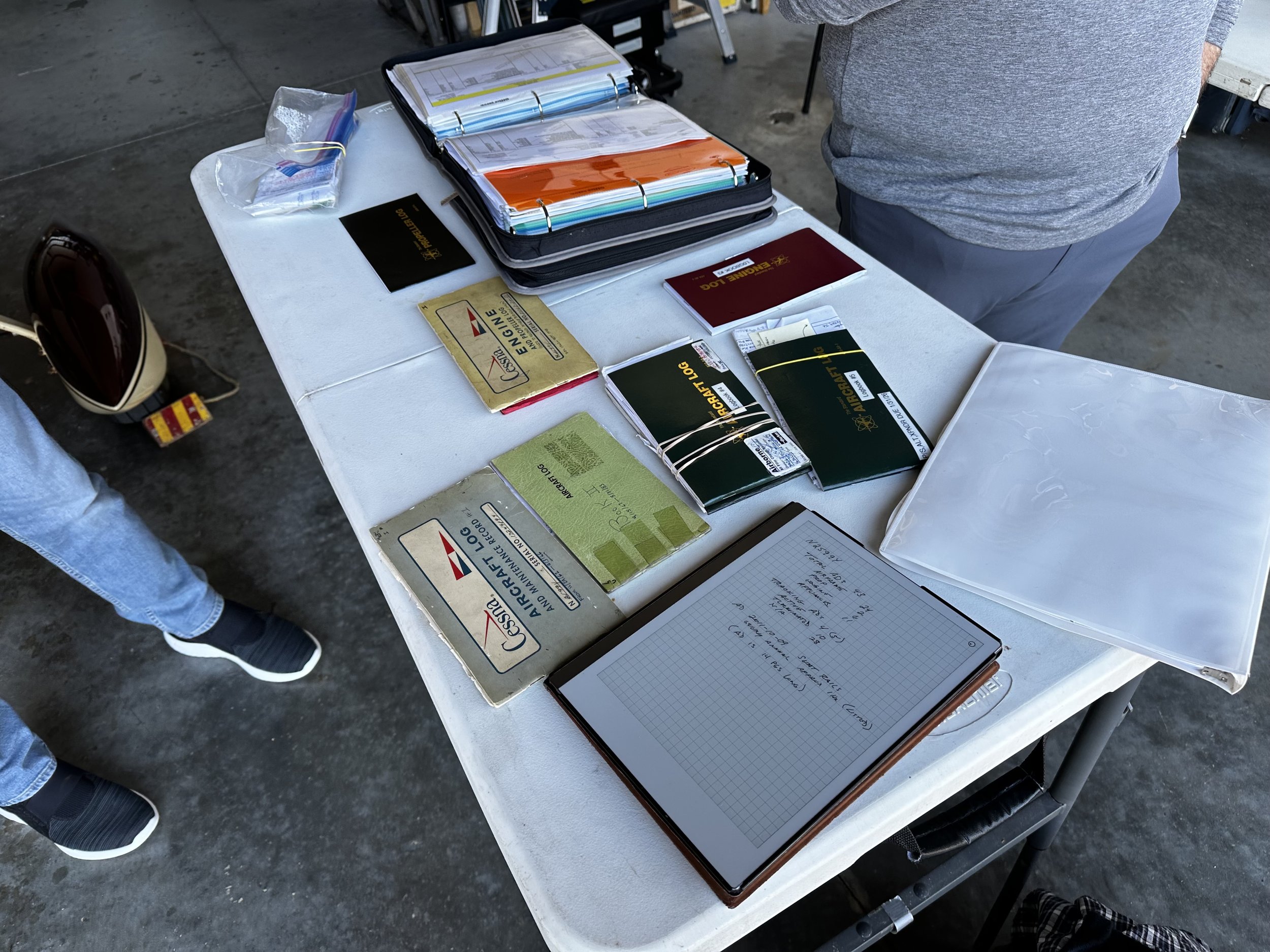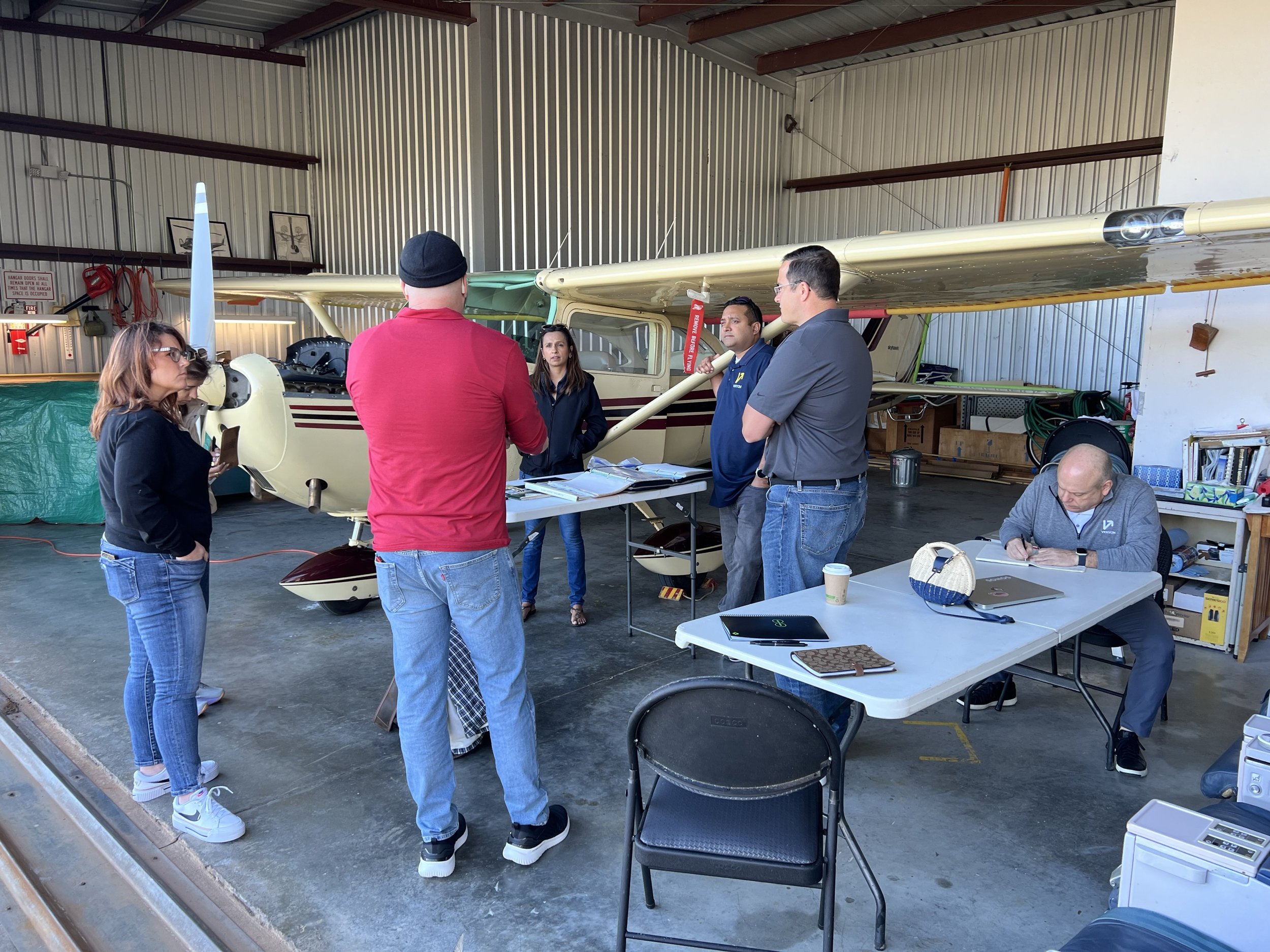Veryon : Inspect
Effortless Aircraft Inspections: Automated Research, Seamless Task Management.
Timeline: 2 months Role: User research, Product design, Prototyping
Role
Product Designer
(Project Lead)
Team
Veryon Engneering & Product
(Solo)
Duration
Feb. 2024
(2 mo. total)
The Process
— 1
Discovery
— 2
Ideation
— 3
Design
— 4
Dev Handoff
What is the job to be done, and what do users expect?
Before doing any design work it was important to understand the process of 100hr and 50 hr inspection process a AMP has to complete to verify airworthiness of an aircraft. This was the begning of a 3 day on sight discovery research with a AMP mechanic and talking to stakeholders (in this case Piper Aircraft).
01
What did we learn?
By using the information I collected throughout my research and user studies, I took those user insights and turned them into four opportunity pillars that would ultimately guide my design process.
AD research is done first and is frustrating
03
Customization and scalability
02
04
Workflow is established by FAA Regulations.
Customization and personalization
PERSONA + JOURNEY MAPPING
Empathizing With Our User
After onsite research at UPS and American Airlines, we observed firsthand the challenges technicians and maintenance controllers face—disconnected tools, slow workflows, and high-pressure decision-making. To improve their experience, solutions must prioritize usability, real-time collaboration, and seamless access to critical data.
Create a space that is fimilar and
complies with FAA regulation.
Allow for a automated and seemless aircraft onboarding
How might we?
Allow customization and scalability.
Facilitate communication among maintenance teams
Priority of the featurers
INFORMATION ARCHITECTURE & STRUCTURE
Restructuring content to tell a cohesive story
Designs Explorations
Based on our interviews and analysis, we understand the priority of different features. This helps us create our information architecture. As knowledge share has the highest priority, we decide to have this functionality featured at home page.
Based on the defined 5 main features: aircraft wizard, inspection checklist, AD Complience, flagged discrepancies, publication research, and tasks progression .
To further define users’ actions, we created user flows for different features to gain a better understanding of how users will use it
We stuck to short rapid design sprints internally with key team members throughout the project. After selecting the ideas to move forward, the next phase was to ideate some key user flows to validate them quickly with users.
Concept 2 :
AD research is completed first.
Presenting AD research before the user gets to the inspection checklist would help create a more compressive checklist within inspections. This would also help reduce the cognitive load the user would need to do within the inspection checklist screen by splitting it out to
Concept 1 :
Combining AD research within the follow of inspection checklist.
This design made sure that the user would get to their end goal first by combining AD research workflow within the inspection checklist. Users would get the option to switch over to the AD module and add any recurring or new airworthiness directives that was established by the FAA. In doing so, the user could create their inspection checklist incrementally.
After discussing with 5 different customers and 2 different type of operations (Part 145 and Part 91), we discovered that customers prioritize conducting Airworthiness Directive (AD) research independently before relying on the system, indicating a lack of trust in current processes.
Key Points:
Customers rely on FAA websites for AD directives due to distrust in existing systems.
The research process often involves reviewing old logbooks and comparing them against the FAA's AD status list.
Engagement with various customers highlights a consistent expectation for proactive AD research.
Testing our concepts
While we were waiting for feedback from the client on the HiFi screens, we began working on the developer handoff. I was responsible each workflow using XDs development mode to show the spacing and padding between elements as well as leave annotations on each of the screens for the developers to follow.
Development Handoff
REFLECTION
Outcomes
Technician response to the beta was exceptional. The early adopter program translated into sales sooner than expected based on technician recommendation. The new inspection toolhad pushed the product line to 189% of plan by end of the following quarter - even in a world still reeling from the pandemic. Ongoing evaluations using the Software Usability Scale (SUS) questionnaire revealed user perceptions of usefulness and usability in high 80s.
By using "just enough" research, the Design team showed a skeptical business unit how human-centered design can take a product from good to great. We helped maintenance technicians level up by introducing artificial intelligence into their work, and stalled sales revenues began to move in the right direction again.
Learnings
Standing your ground and advocate for research backed designs. As the sole product designer for this project , getting my voice heard by c-level executives and upper management posed a challenge but with an emphasis on data-driven design I was able to reinforce and build creditability for design proposals. My data-driven approach has allowed me to create designs that are grounded in real user data and insights, resulting in a product that meets the specific needs of our target audience.
I have constantly asked questions like "What would a inspector expect to see on at this stage?" to ensure that the product is designed with the end-user in mind. This approach has allowed me to create designs that are not only visually appealing but also functional and relevant to our target audience. I am excited to see the launch of this product and am confident that it will be well received.



















